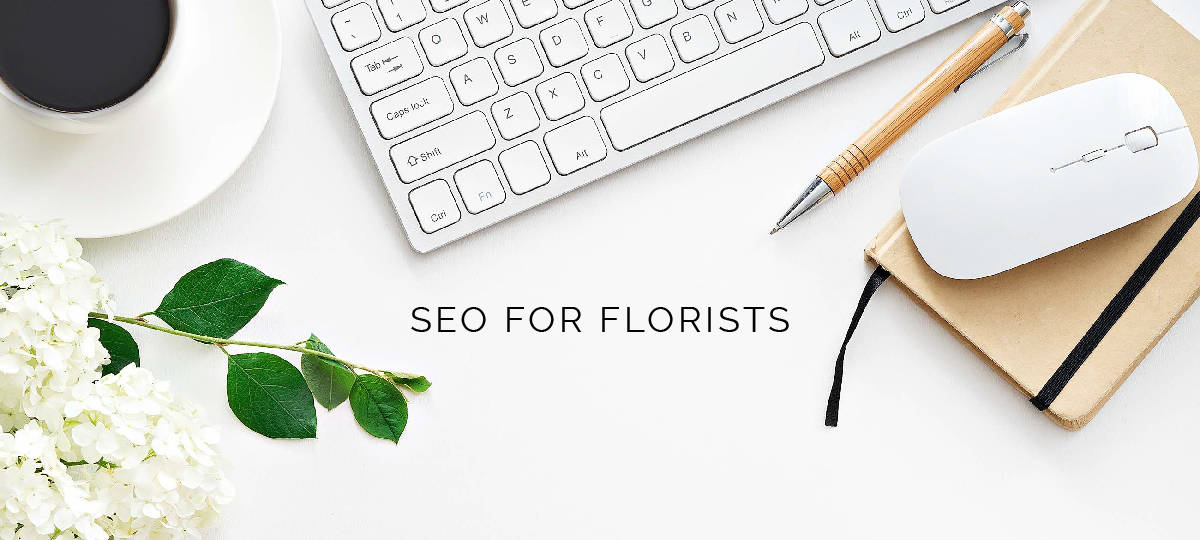Hello!
As a florist, you know the importance of creating beautiful, eye-catching arrangements that captivate your customers. But in today’s digital age, simply having a knack for floral design isn’t enough. To truly thrive in the competitive world of floristry, you need to ensure that your business is visible online – and that’s where search engine optimization (SEO) comes into play.
 The floral industry is blossoming, with over 33,000 floral companies vying for market share across the United States. From thoughtful get-well wishes to vibrant birthday bouquets for loved ones or simple gestures of kindness, Americans spare no expense for floral arrangements.
The floral industry is blossoming, with over 33,000 floral companies vying for market share across the United States. From thoughtful get-well wishes to vibrant birthday bouquets for loved ones or simple gestures of kindness, Americans spare no expense for floral arrangements.
This fragrant market generates a staggering $7 billion in annual revenue, catering to customers nationwide who appreciate the beauty and sentiment that fresh flowers can provide.
With such fierce competition, florists must cultivate effective marketing strategies to blossom and thrive in this flourishing industry.
SEO is optimizing your website and online presence to rank higher in search engine results pages (SERPs) for relevant keywords and phrases. By implementing effective SEO strategies, you can increase your website’s visibility, drive more organic traffic, and ultimately attract more customers to your floral business.
In this comprehensive guide, we’ll explore the world of SEO for florists, covering everything from keyword research and on-page optimization to link-building and local SEO tactics. Whether you’re a seasoned florist looking to boost your online presence or a newcomer, this guide will provide the tools and knowledge you need to bloom online.
Understanding SEO: The Basics
Before we delve into specific SEO strategies for florists, let’s first establish a solid understanding of what SEO entails and why it’s crucial for your business.
 At its core, SEO revolves around two main components: on-page optimization and off-page optimization.
At its core, SEO revolves around two main components: on-page optimization and off-page optimization.
On-page optimization refers to the practices you implement directly on your website to make it more search engine-friendly. This includes optimizing your website’s content, structure, and technical elements to align with search engine algorithms and best practices.
On the other hand, off-page optimization involves activities outside your website that contribute to your online authority and credibility. This primarily includes link building (earning high-quality backlinks from other reputable websites) and social media engagement.
The ultimate goal of SEO is to improve your website’s ranking in SERPs for relevant keywords and phrases that your potential customers are searching for. By ranking higher, your website becomes more visible and accessible to users, increasing the likelihood of attracting new customers and driving conversions.
What is SEO for Florists?
SEO for florists refers to optimizing a florist’s website and online presence to rank higher in search engine results pages (SERPs) for relevant keywords and phrases related to the floral industry. The goal of SEO for florists is to increase the visibility and organic traffic to their website from potential customers searching for floral products and services online.
Why SEO Matters for Florists
In the floral industry, where competition is fierce and customers have many options, SEO can be a game-changer.
 Here are a few compelling reasons why SEO should be a top priority for your floral business:
Here are a few compelling reasons why SEO should be a top priority for your floral business:
- Increased Online Visibility With more and more customers turning to the internet to find local florists and make purchases, having a strong online presence is essential. By optimizing your website for relevant keywords and phrases, such as “wedding florist in [your city]” or “flower delivery near me,” you can increase your chances of appearing at the top of search results, making it easier for potential customers to discover your business.
- Targeted Traffic and Conversions SEO isn’t just about driving more traffic to your website; it’s about attracting the right kind of traffic – qualified leads actively searching for your products and services. By targeting relevant keywords and creating compelling, informative content, you can ensure that the traffic you receive will more likely convert into paying customers.
- Cost-Effective Marketing While paid advertising campaigns can be effective for florists, they can also be expensive and may not provide a sustainable long-term solution. SEO, on the other hand, is a cost-effective marketing strategy that can yield long-lasting results. Once you’ve established a strong online presence and ranking, you can continue to reap the benefits of increased organic traffic without needing ongoing ad spend.
- Competitive Advantage In the competitive floral industry, implementing effective SEO strategies can give you a significant edge over your competitors. By optimizing your website and leveraging various SEO tactics, you can outrank your competitors in search results, increasing your chances of capturing potential customers’ attention and business.
Keyword Research: The Foundation of SEO for Florists
 Keyword research is the cornerstone of any successful SEO strategy, and it’s especially crucial for florists. By identifying the right keywords and phrases that your target audience is searching for, you can tailor your content and optimization efforts accordingly, increasing your chances of ranking well in SERPs.
Keyword research is the cornerstone of any successful SEO strategy, and it’s especially crucial for florists. By identifying the right keywords and phrases that your target audience is searching for, you can tailor your content and optimization efforts accordingly, increasing your chances of ranking well in SERPs.
Here are some tips for conducting effective keyword research for your floral business:
Identify your target audience and their search intent
Before you start researching keywords, it’s essential to understand your target audience and their search intent. What types of floral products or services are they looking for? Are they searching for local florists, specific flower varieties, or floral arrangements for particular occasions (e.g., weddings, funerals, birthdays)?
By understanding your audience’s needs and search behavior, you can better identify relevant keywords that align with their intent, increasing the likelihood of attracting qualified traffic to your website.
Use keyword research tools
Various keyword research tools can help you discover relevant keywords and their search volumes, competition levels, and other valuable insights.
 Some popular options include:
Some popular options include:
- Google Keyword Planner
- Semrush
- Ahrefs
- Moz Keyword Explorer
These tools can provide a wealth of data to help you identify high-potential keywords and phrases to target in your SEO efforts.
Consider long-tail keywords
While shorter, more general keywords (e.g., “florist”) may have higher search volumes, they are often more competitive and may not accurately reflect your target audience’s needs. Long-tail keywords, which are longer and more specific phrases (e.g., “same-day flower delivery for Mother’s Day in [your city]”), can be easier to rank for and tend to attract more qualified traffic.
Analyze your competitors
 Take some time to research your competitors’ websites and look for opportunities to target keywords and phrases that they may be overlooking.
Take some time to research your competitors’ websites and look for opportunities to target keywords and phrases that they may be overlooking.
You can use tools like Ahrefs or Semrush to analyze your competitors’ backlink profiles and identify potential gaps in their keyword targeting strategies.
Continuously refine and update your keyword list
Keyword research is ongoing, as search trends and user behavior can change over time. Review and refine your keyword list to ensure you target the most relevant and up-to-date keywords for your floral business.
On-Page Optimization: Making Your Website Search Engine-Friendly
Once you’ve identified your target keywords, the next step is to optimize your website’s on-page elements to ensure that search engines can easily understand and rank your content. Here are some key on-page optimization tactics to implement:
Optimize your titles and meta descriptions
Your page titles and meta descriptions are among the first things that users will see in search results, so optimizing them with your target keywords and compelling, attention-grabbing copy is essential. Keep your titles concise and descriptive, and use your meta descriptions to provide a brief, enticing preview of your page’s content.
Create high-quality, keyword-rich content
 Content is king in the world of SEO, and florists must create informative, engaging, and keyword-optimized content.
Content is king in the world of SEO, and florists must create informative, engaging, and keyword-optimized content.
This can include blog posts, product descriptions, and informational pages about your floral services and offerings.
When creating content, focus on providing value to your audience by addressing their pain points, answering their questions, and showcasing your expertise in the floral industry.
Incorporate your target keywords naturally throughout your content, but avoid keyword stuffing, as this can negatively impact your rankings and user experience.
Optimize your images and multimedia
Search engines can’t fully understand the content of images and videos, so optimizing these elements with descriptive titles, alt text, and captions that include your relevant keywords is important. This helps search engines better interpret the context of your multimedia content and improves accessibility for users with disabilities.
Implement structured data and schema markup
Structured data and schema markup are coding languages that help search engines better understand the content and context of your website’s pages. By implementing these techniques, you can enhance your rich snippets in search results (e.g., displaying star ratings, prices, or product information), which can improve click-through rates and user engagement.
Ensure technical SEO best practices
 Technical SEO encompasses various factors contributing to your website’s overall health and performance, including site speed, mobile-friendliness, security (HTTPS), and crawlability.
Technical SEO encompasses various factors contributing to your website’s overall health and performance, including site speed, mobile-friendliness, security (HTTPS), and crawlability.
Addressing these technical aspects can improve your website’s user experience and search engine accessibility, ultimately contributing to better rankings and visibility.
Off-Page Optimization: Building Authority and Credibility
While on-page optimization is crucial for making your website search engine-friendly, off-page optimization is vital in building your online authority and credibility. Here are some key off-page optimization strategies to consider:
Link building
Link building is the process of earning high-quality backlinks from other reputable websites. Search engines view backlinks as votes of confidence and a measure of your website’s authority and relevance. The more high-quality backlinks you can acquire from authoritative and relevant sources, the better your chances of ranking well in SERPs.
 As a florist, you can explore various link-building opportunities, such as:
As a florist, you can explore various link-building opportunities, such as:
- Guest blogging on industry-related websites
- Creating shareable infographics or visual content
- Collaborating with local businesses or organizations for cross-promotion
- Participating in relevant online communities and forums
- Submitting your website to reputable online directories
Local SEO For florists with physical storefront locations,
Local SEO is a critical component of your overall SEO strategy. Local SEO involves optimizing your online presence to rank well in location-based searches, such as “florists near me” or “flower delivery in [your city].”
Here are some key local SEO tactics to implement:
- Claim and optimize your Google Business Profile (formerly Google My Business)
- Encourage customers to leave reviews on platforms like Google, Yelp, and Facebook
- Ensure consistent NAP (Name, Address, Phone Number) listings across online directories
- Leverage location-specific keywords and content on your website
- Build citations and backlinks from local sources
Social media engagement
 While social media signals may not directly impact your search rankings, active engagement can increase your online visibility and credibility.
While social media signals may not directly impact your search rankings, active engagement can increase your online visibility and credibility.
By consistently sharing valuable content, interacting with your audience, and building a strong social media following, you can increase brand awareness, drive referral traffic to your website, and potentially earn valuable backlinks.
Influencer marketing
Collaborating with influencers in the floral or wedding industries can effectively tap into new audiences and build credibility through trusted sources. Identify relevant influencers with engaged followings and explore opportunities for sponsored content, product placements, or co-marketing campaigns.
Measuring and Optimizing Your SEO Efforts
SEO is an ongoing process that requires continuous monitoring, analysis, and optimization. To ensure that your efforts yield desired results and identify areas for improvement, it’s essential to track and measure the right metrics.
 Here are some key metrics to monitor and optimizing strategies to consider:
Here are some key metrics to monitor and optimizing strategies to consider:
- Track your rankings and organic traffic: Use tools like Google Search Console and SEMrush to monitor your website’s rankings for your target keywords and organic traffic over time. Identify any fluctuations or patterns and adjust your strategies accordingly.
- Analyze user behavior and engagement metrics: Besides rankings and traffic, it’s important to monitor user behavior and engagement metrics, such as bounce rates, time on site, and pages per session. These metrics can provide valuable insights into the effectiveness of your content and user experience, helping you identify areas for improvement.
- Conduct A/B testing and experiments: Don’t be afraid to experiment with different on-page elements, content formats, or marketing tactics to see what resonates best with your audience. Conduct A/B tests and carefully analyze the results to refine and optimize your approach continuously.
- Stay up-to-date with industry trends and algorithm updates: Search engine algorithms are constantly evolving, and staying informed about the latest trends and updates in the SEO industry is essential. Follow reputable industry blogs, attend webinars or conferences, and adjust your strategies to ensure compliance with best practices and algorithm changes.
- Continuously review and update your content: Fresh, up-to-date content is essential for maintaining and improving your search rankings. Regularly review and update your existing content to ensure it remains relevant, accurate, and optimized for your target keywords and audience.
By consistently measuring and optimizing your SEO efforts, you can ensure that your floral business remains visible and competitive in the ever-evolving digital landscape.
Conclusion
 In the competitive world of floristry, implementing effective SEO strategies can be the key to unlocking unprecedented online visibility, attracting qualified leads, and driving sustainable business growth.
In the competitive world of floristry, implementing effective SEO strategies can be the key to unlocking unprecedented online visibility, attracting qualified leads, and driving sustainable business growth.
By following the principles and tactics outlined in this comprehensive guide, you can optimize your website, build your online authority, and position your floral business for long-term success in the digital realm.
Remember, SEO is an ongoing journey, not a one-time destination. Consistent effort, data-driven optimization, and a commitment to providing exceptional value to your audience are the foundations of a successful SEO strategy for florists.
Embrace the power of SEO, and watch your floral business bloom online, captivating new customers and flourishing in the ever-growing digital landscape.
Thank you!
Join us on social media!
See you!






